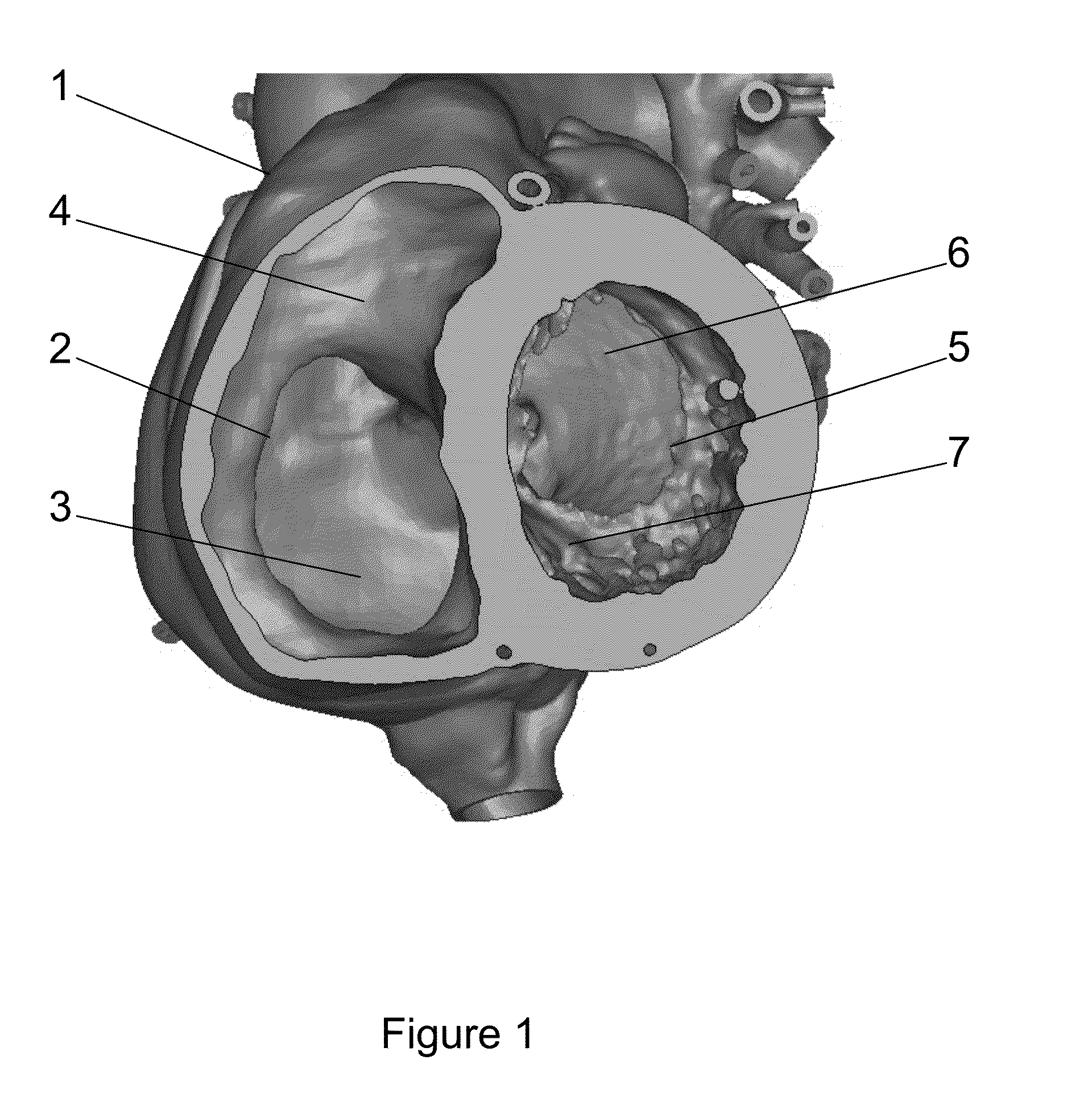Patient-specific intraluminal implants
- Summary
- Abstract
- Description
- Claims
- Application Information
AI Technical Summary
Benefits of technology
Problems solved by technology
Method used
Image
Examples
examples
Identification of Suitable Locations for Use in the Development of a Patient-Specific Intraluminal Implant
[0121]The present example provides a particular embodiment which may be used to identifying and selecting the locations in a patient's anatomy that are suitable for use as a base for the patient-specific contact surfaces of a intraluminal implant, such as but not limited to, an intraluminal docking structure.
[0122]In first instance the patient's anatomy onto which the intraluminal docking structure needs to be deployed is identified (e.g. the tricuspid valve a shown in FIG. 1). Using medical imaging equipment the variation of the anatomy of tricuspid valve is monitored in function of time. For this purpose a plane is identified in which the measurements are performed (FIG. 3), thereby providing cross section images (FIG. 4) of the plane cut in function of time. From these images specific parameters are measured such as for instance the maximum distance within the intersection of...
PUM
| Property | Measurement | Unit |
|---|---|---|
| Diameter | aaaaa | aaaaa |
| Structure | aaaaa | aaaaa |
| Flexibility | aaaaa | aaaaa |
Abstract
Description
Claims
Application Information
 Login to View More
Login to View More - R&D
- Intellectual Property
- Life Sciences
- Materials
- Tech Scout
- Unparalleled Data Quality
- Higher Quality Content
- 60% Fewer Hallucinations
Browse by: Latest US Patents, China's latest patents, Technical Efficacy Thesaurus, Application Domain, Technology Topic, Popular Technical Reports.
© 2025 PatSnap. All rights reserved.Legal|Privacy policy|Modern Slavery Act Transparency Statement|Sitemap|About US| Contact US: help@patsnap.com



